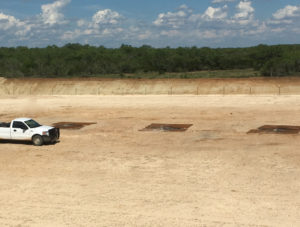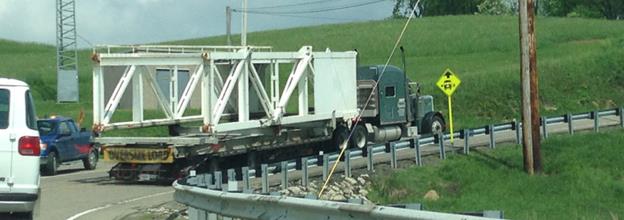SELECTING WHERE TO DRILL
Now that you understand more about reservoirs and what lies beneath our feet, let's discuss how a company might select where to drill. Several factors determine where a drilling rig will go next, and we will cover just a few of the main reasons. Also, keep in mind that economics, safety, and regulations all play a large role in the deciding factors below.
- Leasing status: A company can only drill a well on acreage on which they have the right to do so. Normally, this is accomplished by the company leasing the mineral rights from the landowner. During the leasing process, companies and the owner of the mineral rights agree to specific terms and conditions. This includes initial payment to lease the land, length of the lease, a percentage of production to be paid to the lessor, terms and conditions under which the lease must be renewed, and much more. These leases can also dictate how long the company has to drill a well before the lease expires. This often affects when and where a company will drill.
- Ease of build: This refers to how easy it would be to establish a wellpad on a parcel of land. Wellpads for unconventional wells now leave large footprints, and in some regions (such as Appalachia), large portions of hills or other landscapes must be altered to form a large enough flat spot for a wellpad. Will the area need timbered? Furthermore, companies are often held accountable for restoring the land once operations cease. Of course, construction is not free and thus will affect how eager a company is to develop a particular lease.

Figure 1. Wellpad constructed and ready for the drilling rig.
- Location: How close would the well be to local roads, water sources, existing pipelines, etc.? Also, would the wellpad be in city limits or in a traffic-restricted area? Companies are often held responsible for creating or reinforcing any roads that are needed to reach the wellpad. This can become quite expensive, especially if the well is far away from a paved road with good structural integrity. Companies will also need water during operations - especially if the well is to be fraced. In regions such as Texas, water wells are commonly drilled, but in regions like Appalachia, water is typically pulled from existing surface bodies to support drilling and fracing operations. Furthermore, once the well is brought into production, there must be a way to sell it. Natural gas will need to be sold into a pipeline, so how close is the nearest pipeline? Will one need to be built? In some regions of the U.S., pipelines exist for oil as well (such as in some parts of Texas); so again, how close or far is it from an existing pipeline? Lastly, how close is the location to the existing markets?
- Expected production rates: Of course, if a company is going to spend all of this money to develop the wellpad, drill the well, and bring it into production, it must pay off (at least theoretically). The only way companies get a return on their money is from the oil and/or natural gas that will be produced from the well. Certain areas of known reservoirs might produce a different mixture of hydrocarbons, depending on the formation's characteristics and the way the well is produced (this refers to the thermal maturity of the hydrocarbons). Some areas might produce more oil than other areas, the same is true for gas. Of course, with different mixtures available, some areas are going to be more profitable than others. Perhaps a company will choose to drill in an area where they think they can make 1,000 barrels of oil per day for the first six months versus an area where they think they could get 15 million cubic feet of natural gas per day for the first six months. Perhaps it would be the opposite. It depends on current commodity pricing and their sales agreements.
Note that where a company plans to drill can quickly change, as any of the items above could easily be changed to be more favorable or less favorable economically.
 \
\
Figure 2. Part of drilling rig being transported to the next location.
Once the company has determined where it wishes to drill, the well(s) must be permitted. Next, let's talk a little about the permitting process.


 \
\